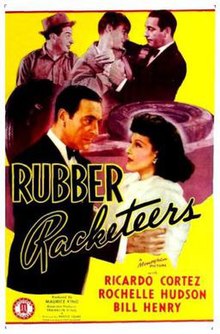
George Raft was an American film actor and dancer identified with portrayals of gangsters in crime melodramas of the 1930s and 1940s. A stylish leading man in dozens of movies, Raft is remembered for his gangster roles in Quick Millions (1931) with Spencer Tracy, Scarface (1932) with Paul Muni, Each Dawn I Die (1939) with James Cagney, Invisible Stripes (1939) with Humphrey Bogart, and Billy Wilder's comedy Some Like It Hot (1959) with Marilyn Monroe and Jack Lemmon; and as a dancer in Bolero (1934) with Carole Lombard and a truck driver in They Drive by Night (1940) with Ann Sheridan, Ida Lupino and Bogart.

Charles John "Tim" Holt III was an American actor. He was a popular Western star during the 1940s and early 1950s, appearing in forty-six B westerns released by RKO Pictures.
Edward Small was an American film producer from the late 1920s through 1970, who was enormously prolific over a 50-year career. He is best known for the movies The Count of Monte Cristo (1934), The Man in the Iron Mask (1939), The Corsican Brothers (1941), Brewster's Millions (1945), Raw Deal (1948), Black Magic (1949), Witness for the Prosecution (1957) and Solomon and Sheba (1959).
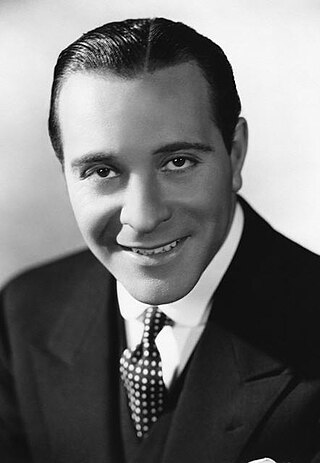
Ricardo Cortez was an American actor and film director. He was also credited as Jack Crane early in his acting career.
King Brothers Productions was an American film production company, active from 1941 to the late 1960s. It was founded by the Kozinsky brothers, Morris, Frank, and Hyman, who later changed their professional surname to "King". They had notable collaborations with such filmmakers as Philip Yordan and William Castle and are particularly remembered today for employing a number of blacklisted writers during the Red Scare of the late 1940s and 1950s. Their films include Dillinger (1945), Suspense (1946), Gun Crazy (1949), Carnival Story (1954), The Brave One, Gorgo (1961), Captain Sindbad (1963), and Heaven With a Gun (1968).

Retread, also known as "recap", or a "remold" is a re-manufacturing process for tires that replace the tread on worn tires. Retreading is applied to casings of spent tires that have been inspected and repaired. It preserves about 90% of the material in spent tires and the material cost is about 20% compared to manufacturing a new one.
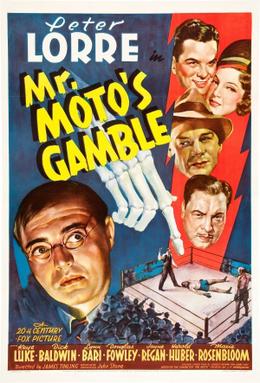
Mr. Moto's Gamble is the third film in the Mr. Moto series starring Peter Lorre as the title character. It is best remembered for originating as a movie in the Charlie Chan series and being changed to a Mr. Moto entry at the last minute.

The Glass Key is a 1942 American film noir based on the 1931 novel of the same name by Dashiell Hammett. The picture was directed by Stuart Heisler starring Brian Donlevy, Veronica Lake and Alan Ladd. A successful earlier film version starring George Raft in Ladd's role had been released in 1935. The 1942 version's supporting cast features William Bendix, Bonita Granville, Richard Denning and Joseph Calleia.

Baby Face Nelson is a 1957 American film noir crime film based on the real-life 1930s gangster, directed by Don Siegel, co-written by Daniel Mainwaring—who also wrote the screenplay for Siegel's 1956 sci-fi thriller Invasion of the Body Snatchers—and starring Mickey Rooney, Carolyn Jones, Cedric Hardwicke, Leo Gordon as Dillinger, Anthony Caruso, Jack Elam, John Hoyt and Elisha Cook Jr.

Midnight Mary is a 1933 American pre-Code crime drama film directed by William A. Wellman and starring Loretta Young, Ricardo Cortez, and Franchot Tone.
Sorority House is a 1939 American drama film starring Anne Shirley and James Ellison. The film was directed by John Farrow and based upon the Mary Coyle Chase play named Chi House.
Mr. Moto's Last Warning is the sixth in a series of eight films starring Peter Lorre as Mr. Moto.

Paper Bullets is a 1941 American crime thriller film directed by Phil Rosen and starring Joan Woodbury, Jack La Rue and Linda Ware. It was the first film produced by the King Brothers, launching their career.
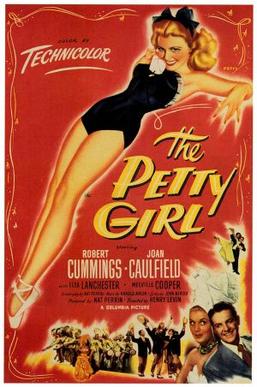
The Petty Girl (1950), known in the UK as Girl of the Year, is a musical romantic comedy Technicolor film starring Robert Cummings and Joan Caulfield. Cummings portrays painter George Petty who falls for Victoria Braymore (Caulfield), the youngest professor at Braymore College who eventually becomes "The Petty Girl".
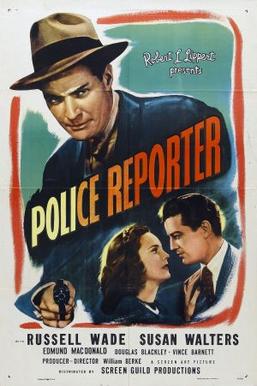
Shoot to Kill, also known as Police Reporter, is a 1947 American film noir directed by William Berke and starring Robert Kent, Luana Walters, Edmund MacDonald and Russell Wade.

Dark Mountain is a 1944 American film noir crime film directed by William Berke. It is also known as Thunderbolt and Thunder Mountain.

Joe MacBeth is a 1955 British–American crime drama, directed by Ken Hughes and starring Paul Douglas, Ruth Roman and Bonar Colleano. It is a modern retelling of Shakespeare's Macbeth, set in a 1930s American criminal underworld. The film's plot closely follows that of Shakespeare's original play. It has been called "the first really stand out movie" of Hughes' career.

Wrecking Crew is a 1942 American drama film directed by Frank McDonald and starring Richard Arlen, Jean Parker, and Chester Morris.
Sangaree is a 1953 American 3-D color period costume drama film by director Edward Ludwig. It was adapted from the 1948 novel of the same name by Frank G. Slaughter.
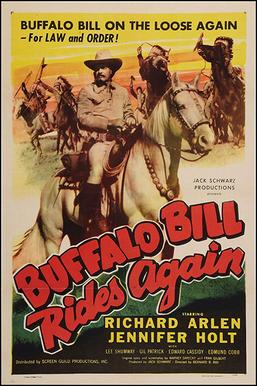
Buffalo Bill Rides Again is a 1947 American Western film starring Richard Arlen. It is also known as Return of Buffalo Bill.
